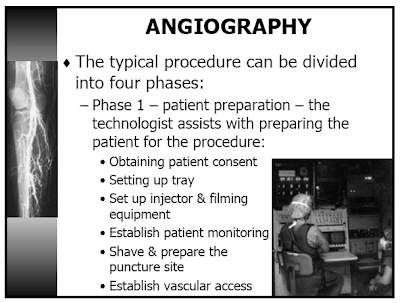Memory Tips by
Lumos Labs, Inc. (http://www.lumosity.com)Certain mental techniques can enhance your ability to remember. Have a go at experimenting with some of the below to see what works best for you.
Acronyms
Create a phrase using the first letter of a series of items you’d like to remember.
For example, to remember to pick up milk, eggs, bread, cereal, Nutella, and avocados, one might create the phrase:
My Entire Book Collection Needs Attention (M.E.B.C.N.A); bizarreness can add to memorability.
Chunking
Breaking down a long series of units into easy-to-remember groupings can make things more manageable and help improve recall. This is the reason why phone numbers are typically grouped into three and four digit units. We suggest this technique for Lumosity’s Monster Garden, Memory Matrix, and Moneycomb exercises; think of clusters of stimuli in terms of what recognizable shapes they make, e.g. “L” or “T” shaped is easier to remember than “three long by two wide”.
Caffeine
In moderation, caffeine can temporarily boost your memory and shorten reaction times. A couple of cups of coffee or a few cups of tea also provide antioxidants for bodily health.
Visualizing
Creating detailed imagery and associations can help with solidifying memories over the long term. The more creative you can get with your imagination, the better: if you meet someone named Nick, perhaps envision him with a white beard and think of him as St. Nick.
Napping
Taking power naps, from 10-20 minutes, can help consolidate memories and learning. Sleeping longer, however, can end up making you groggy.
Memory Jogs
Writing down reminders and strategically placing them in your home, car, and workplace is a good way to jog your memory about important tasks or events.
Brain Training
By strategically exercising your brain it is possible to improve working memory along with other cognitive abilities. This has been shown to be true even late in life.
Enrich Your Environment
Enriching your environment through engaging people, media, and new experiences can improve learning, cognitive reserve and even reinvigorate faded memories. Go on a day trip or work in a volunteer setting!
Catching ZZZZs
Getting enough sleep at night helps consolidate learning and the formation of new memories from the day’s experiences. People typically do best with 7-9 hours a night.
Breathing
Deep, slow breathing can de-activate the “flight or fight” side of your nervous system, protecting the brain from the damaging memory effects of excessive stress.
Hydration
Proper hydration boosts the speed of neuronal firing. Unfortunately, most people are chronically dehydrated, due in large part to the prevalence of alcohol, caffeine, sugar and high protein foods. Eight glasses of water per day is ideal.
Sugar
Consumption of concentrated sugars can spike insulin levels, resulting in fatigue and compromising cognitive functioning. Keeping to complex, instead of simple, carbohydrates helps slow and balance sugar absorption, resulting in more stable energy levels. Complex carbohydrates generally include those in wholegrain form.
Breaking a Sweat
Periodic cardiovascular exercise has been shown to reduce the toxic effects of prolonged stress and stimulate the production of new hippocampal neurons (important for learning and the formation of new memories).
Green Leafies
Vegetables such as kale, collards, chard and spinach have high levels of anti-oxidants which help protect your brain from daily wear and tear.
Dark Chocolate
Eating dark chocolate, the darker the better, also helps protect the brain. This is because chocolate has one of the highest anti-oxidant contents of any food. Keeping it dark minimizes the negative impact of excessive fat and sugar.
Being Social
Engaging people exercises diverse areas of the brain, keeping your cognitive processes active and fit.
Dancing
Dancing is not only a great way to reap the benefits of being social, but it also involves balancing and coordinating movement, all of which are good for your head.
New Languages
Learning a new language pushes the limits of your knowledge and contributes to cognitive reserve. This helps to prevent and slow the effects of mental decline.
Rhyming
Incorporating what you’d like to remember into a rhyme can help with later recall. A common example of this used for plumbing is “righty tighty, lefty loosey”.
Associations
Associating what you’d like to remember with an environment, feeling, or person will help recall on demand. Association is generally used to describe any learning process aside from simple habituation.
Alcohol
Excessive alcohol drinking (more than a couple of drinks per day) has been linked to brain shrinkage and mental decline.
Smoking
Smoking cigarettes constricts the arteries in your brain, limiting available oxygen. The habit has also been correlated with higher risks of stroke and decreased densities of brain gray matter.
Relaxing
Excessive stress can cause brain damage. Your hippocampus (responsible for consolidating new memories) is especially sensitive.
Game Playing
Playing games, whether online or otherwise, can stretch the mind and help build adaptive neural networks.
Rehearsing
Rehearsing new information to yourself, or aloud to others, helps reinforce associated neural networks and learning.
Meditation
Periodically calming and focusing the mind has been shown to help with attention, processing speed, and response times, in addition to relieving stress.
Paying attention
Good attention is the foundation of good memory. Pay special attention next time someone introduces himself, or when you need to remember something else specific, and notice how this affects your later recall.









